Get rid of the sky – or shoot a lot of sky. That’s it, mostly.
The good news – we were in the gorgeous Canadian Rockies.
Athabasca Falls
The bad news – the clouds were mostly gone and we had bright blue skies with harsh, high-contrast light. Our first stop after Whistlers Campground was Athabasca Falls. The Falls are in partly-forested shade, so they’re a bit easier to shoot.
Berner Attention-Getter
Our Bernese Mountain Dog Daisy is our good-will ambassador, but it’s like travelling with a rock star – everyone wants to stop us to pet her. Our Sheltie Buzz tends to be ignored when his sister is around, but doesn’t mind as long as I’m there. Both dogs got their share of attention at the Falls.
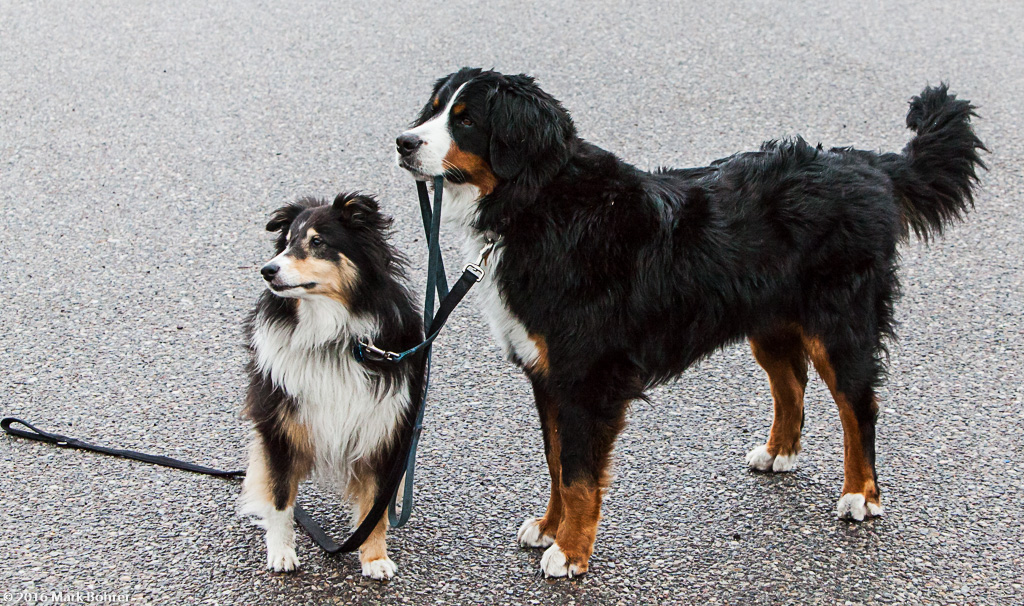
Daisy leading Buzz
Down the Icefields Parkway
There were many ‘must stop’ spots on the Icefields Parkway, most involving water. You have many features to choose from – Athabasca River and Falls, Waterfowl Lakes, Peyto Lake, Bow River and Lake, Kicking Horse River, the glaciers at the Columbia Icefields visitor center, Wapta Lake – all the way down to Lake Louise.
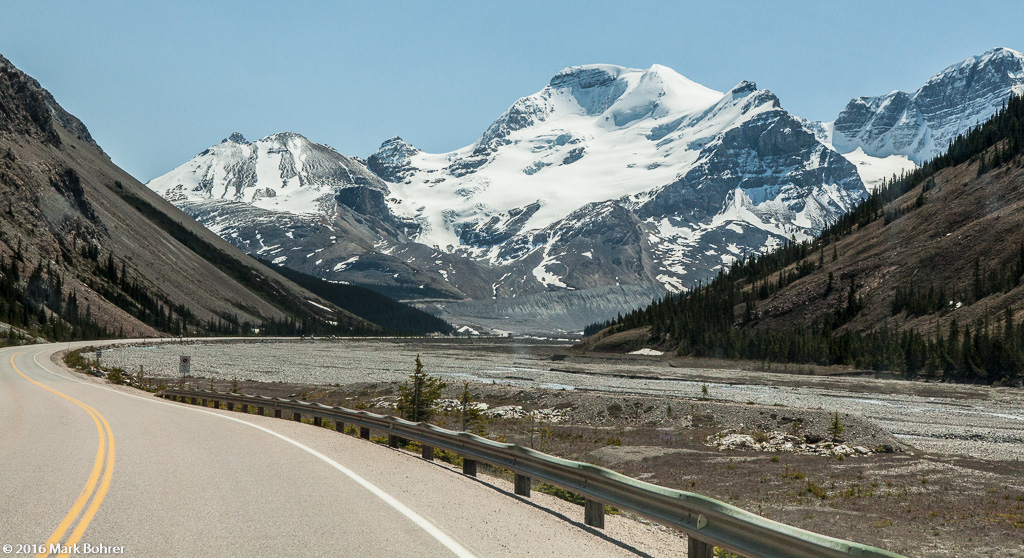
Icefields Parkway
The Columbia Icefields Glacier Discovery Centre provides a balcony vantage point for photographs of the Athabasca Glacier. Several companies offer tours of the Glacier – they take you up close and let you step off onto it. But it was mid-afternoon, and we had more driving to do to get to Lake Louise. We also wanted time for other sights along the way. So we skipped the tours.
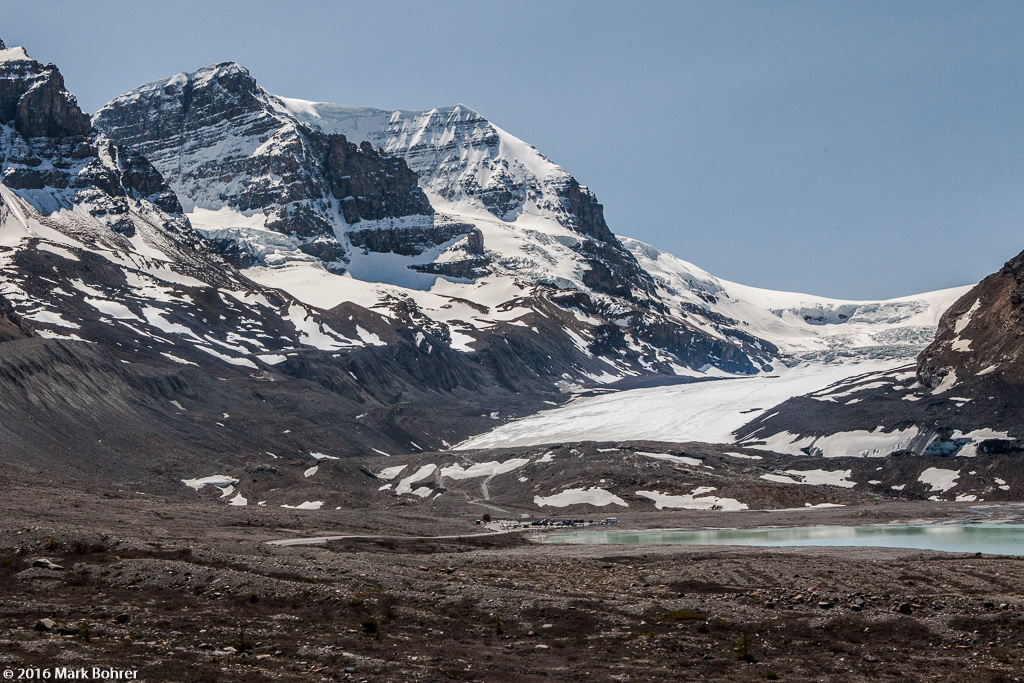
Athabasca Glacier and mountain landscape, Columbia Icefields
Tiny grains near lower center are cabins and vehicles – it’s a big glacier
Even in Spring with plenty of browse, wildlife can still have a hard time. The coats of young bighorn sheep just beyond the Columbia Icefields looked pretty ratty, though the animals themselves seemed active and well-fed enough.
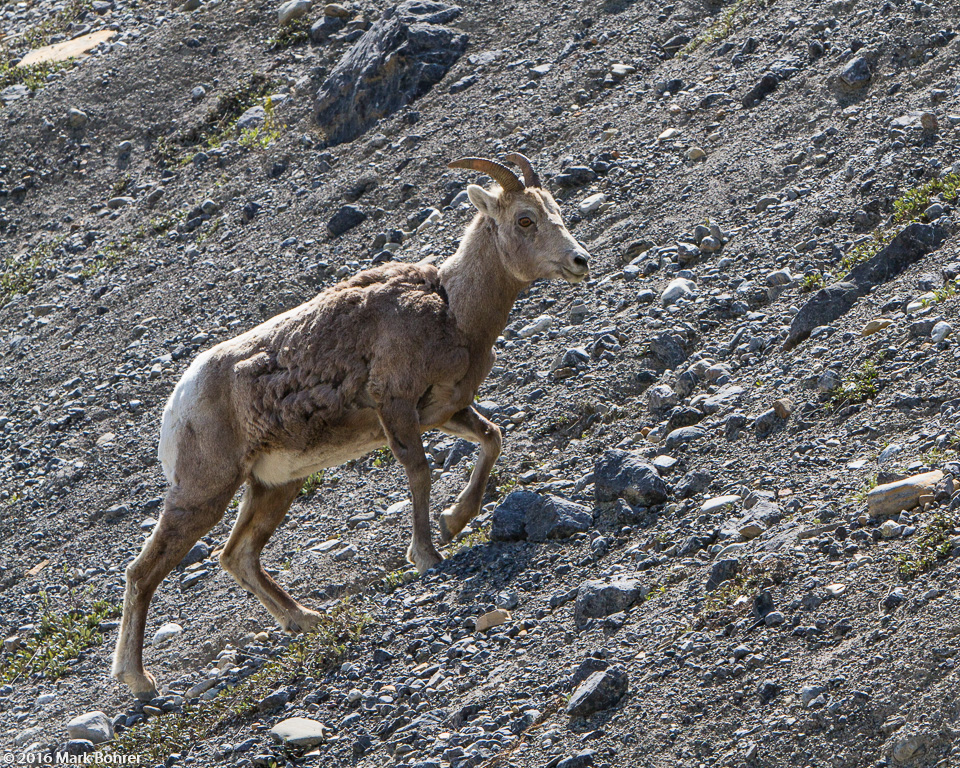
Bighorn sheep south of Athabasca Glacier
Lake Louise – Escaping the Tourists
Next up was Lake Louise. We arrived in late evening, in time to snag a campsite. We reheated an excellent pizza from Lou Malnati’s pizzeria in Chicago for dinner, and enjoyed a slow evening at the campsite.
Lake Louise is gorgeous but touristed. We arrived around 10 am, and took in the popular view near the Fairmont Hotel. For a different, remote vantage point, we hiked to Farview Point. The trail was slick with ice and snow in places, but still doable. The view from the Point was worth it.
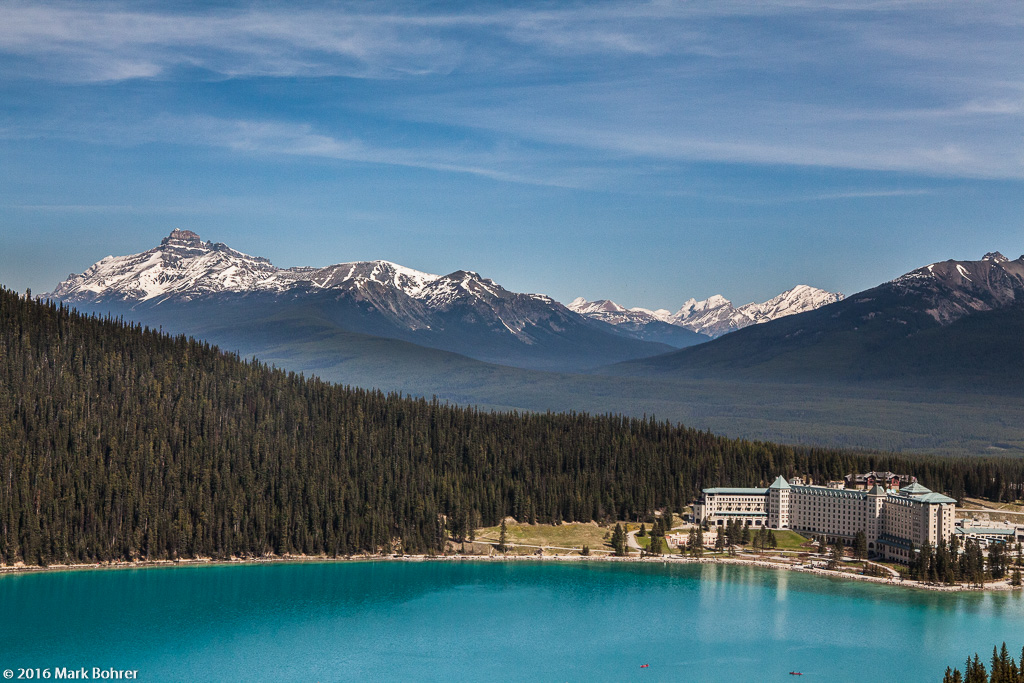
Lake Louise from Farview Point
Skip Banff – Go To Canmore
Then it was onward to the town of Banff. Along the way, we stopped for a Columbian ground squirrel who was upset about something, and again at the Vermillion Lakes Wetlands for more pictures. Taking a dirt access road just before the Alberta 1A interchange outside town gets you close to the Wetlands. It’s a nice break before the town of Banff and its restaurants and tourists.
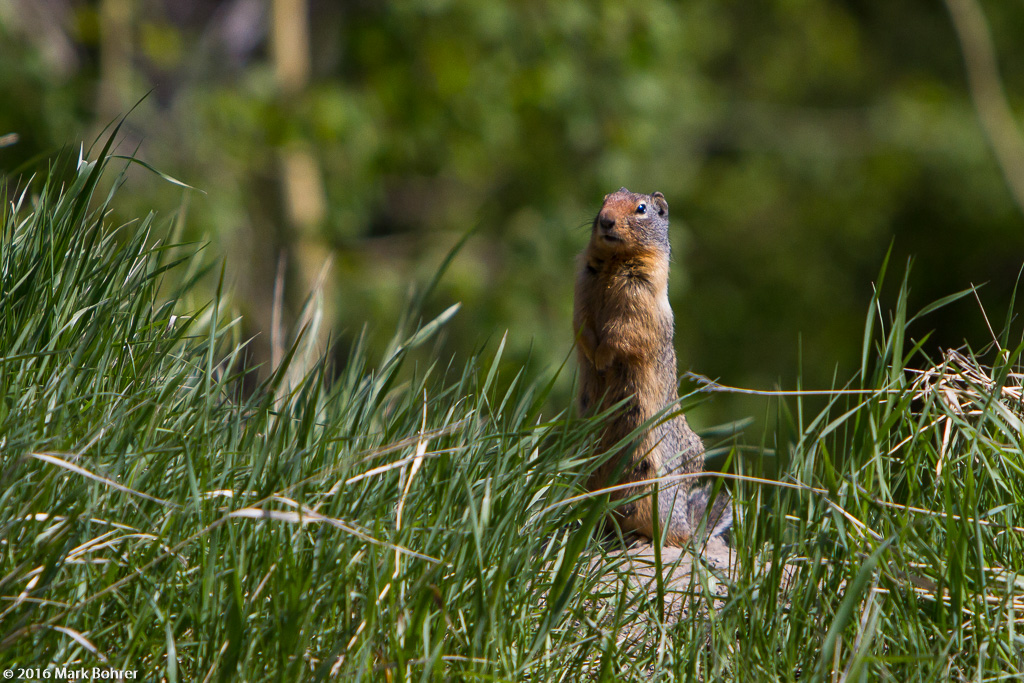
Columbian ground squirrel, Icefields Parkway
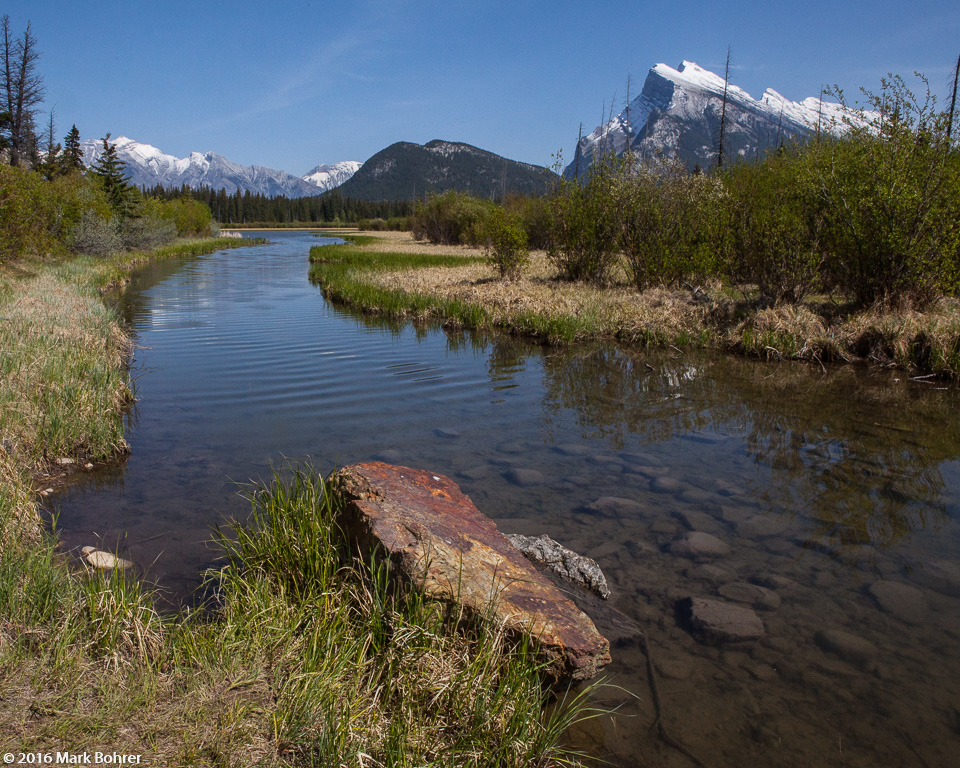
In the Vermillion Lakes Wetlands
After driving around its busy streets with too-long stoplights, we decided to punt Banff, and drove a bit further to Canmore. This let us enjoy excellent beer and food at the Grizzly Paw Brewing Company, and gave us the option to stay at Spring Creek RV Park in town. We took advantage of the extended daylight to enjoy moonrise over the mountains, grazing elk and lounging cottontails on a walk around town.
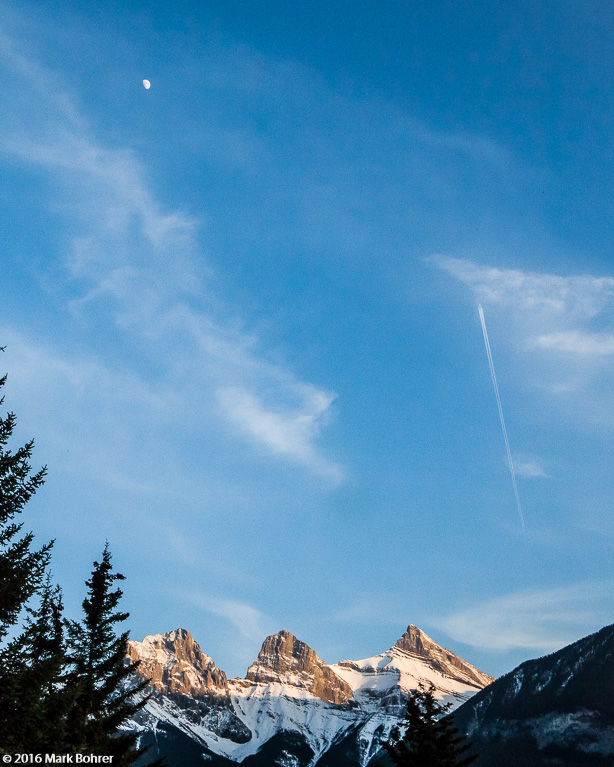 Moonrise over the mountains, Canmore
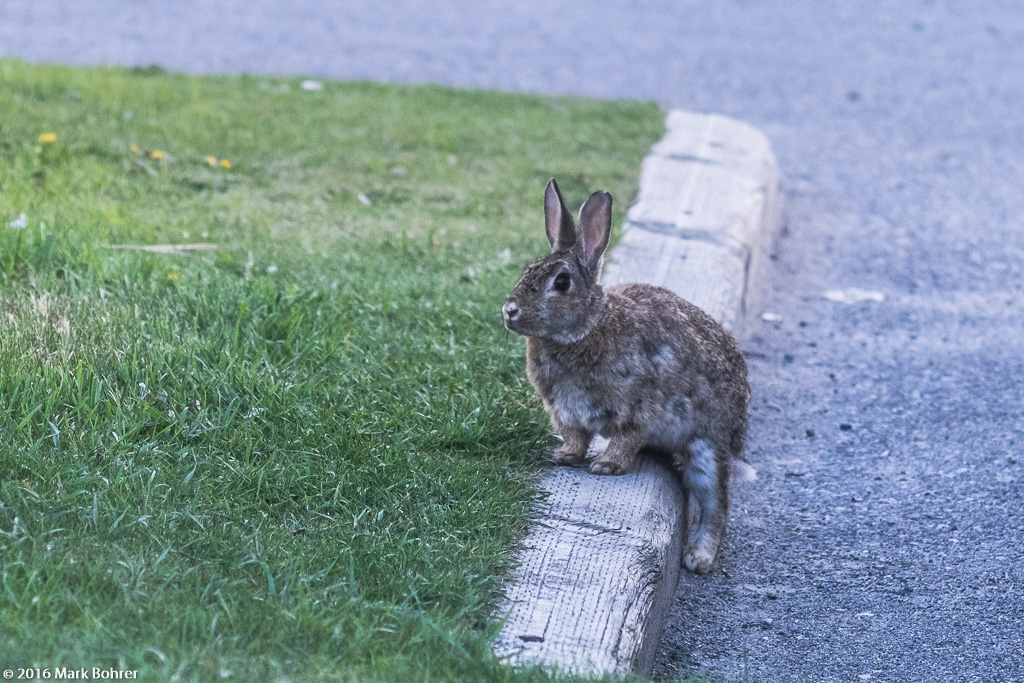
Cottontail enjoying the evening
On our last day in the Canadian Rockies, we explored Lake Minnewanka and the surrounding mountain wilderness – as much as we could by driving. This was the only area with a significant mosquito population, so we beat a hasty retreat to higher, windier areas. We also stopped for a roadside elk, who twitched ears at us before ambling into the trees.
Western Canada’s abundant wildlife and huge forests give a glimpse of what the western U.S. was like 50 years ago.
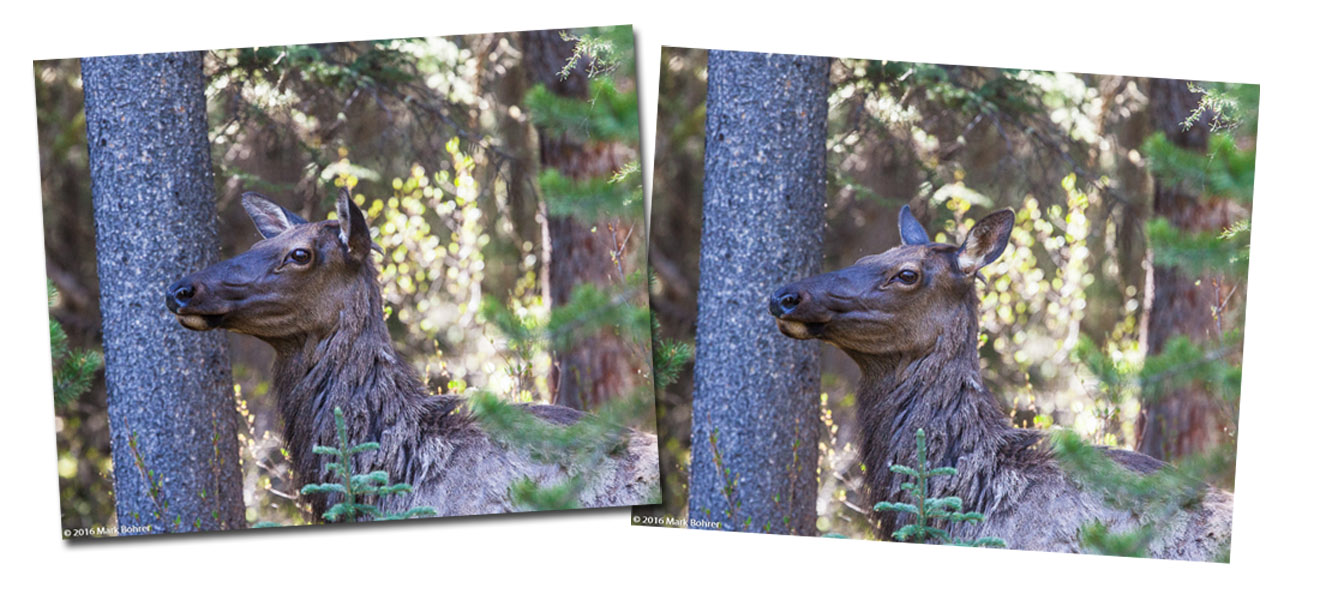
Elk ear twitch on the road to Lake Minnewanka
The morning rolled around all too soon. We drove through Calgary. Its buildings and traffic seemed like any large western city in North America. After several days in the mountains, we decided to press on closer to the border.
We stayed in Okotoks, following a forgetable meal accompanied by a hovering manager urging us to leave a positive review. I suggest you stay away from his restaurant Cha Cha John’s, but recommend RV camping at the Okotoks Lions Sheep River Campground. It’s very green, in a bowl by the Sheep River near downtown. Trees line quiet campsites, and there are very clean restrooms and showers. The only catch is that your coins buy you just a few minutes of shower time, so wash fast!
Then it was finally time to head back across the U.S. border. We’d had no trouble crossing into Canada without our vehicle registration, but I was a little apprehensive about U.S. Customs. I needn’t have worried – they took a look at our passports, asked some questions about food we had, and welcomed us back to the U.S.
Shot Notes
Blue sky and sun anytime outside sunrise and sunset are not a photographer’s friends. The usual way to deal with them is to shoot early and late in the day, or in forested shade. When you’re traveling, you’re not always able to choose your timing and weather conditions.
I look for lower-contrast, tight compositions without a lot of open sky over a foreground subject. You may be able to shoot mountains brightly lit by that sky, but you’ll need to deal with hot highlights and sometimes inky shadows in post.
I shoot in raw format to give me the contrast range to avoid blown highlights. Then I can pull down sky exposure later with Lightroom’s gradient filter, accessed by typing M. When I used film, I held back the sky exposure with a 1/2 neutral density filter at shooting time. But I haven’t carried that filter and its holder for years.
|
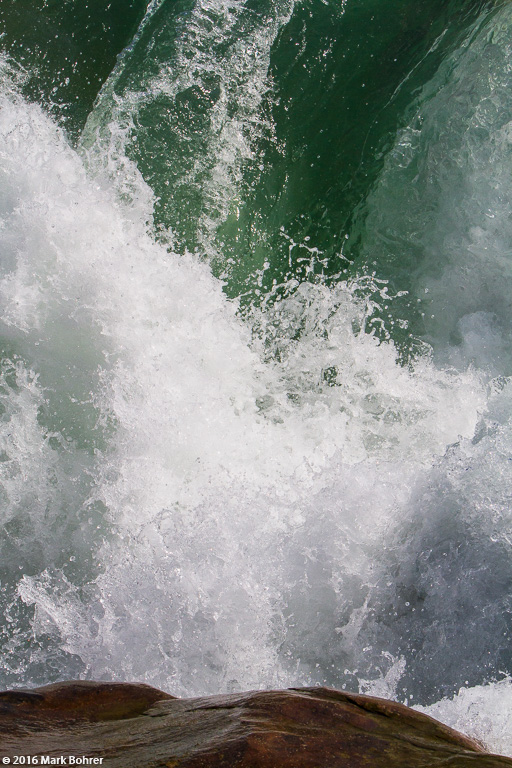











Recent Comments